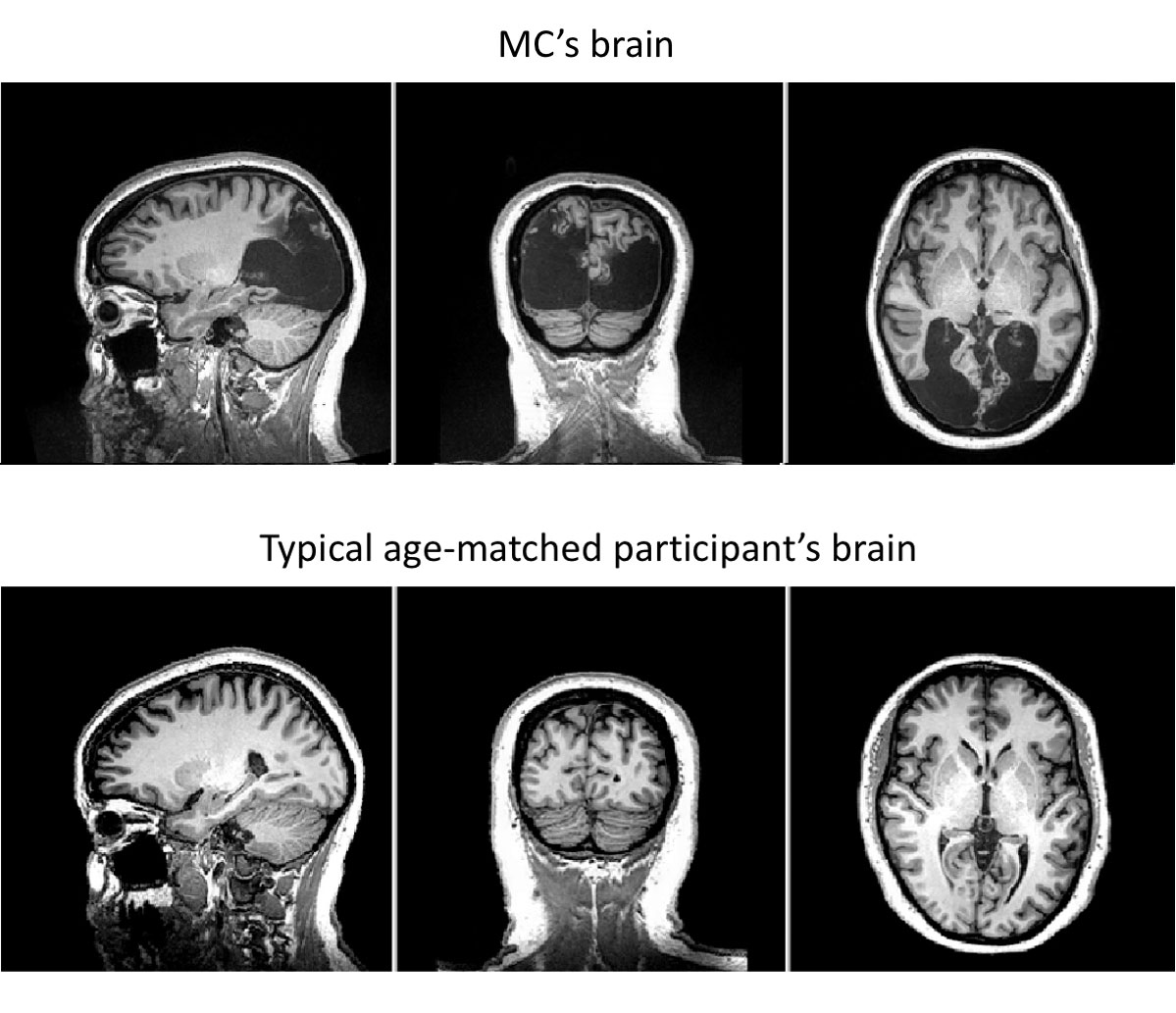Eighteen years ago, Milena Canning suffered a respiratory infection that led to a series of strokes, and she eventually lapsed into a coma that lasted two months. When she woke up, she was blind.
Months after returning home, Canning started to notice that she could see again, but her vision wasn’t the same as it was before. At first, it was flashes of light from a sparkly gift bag, then her daughter’s ponytail bouncing as she walked. Looking out the window on a rainy day, Canning couldn’t see the landscape, but she could perceive water running down the glass.
Canning’s rare ability to see objects only when they are in motion is called Riddoch syndrome. Objects that are stationary remain invisible to Canning.
Neuropsychologist Jody Culham, professor of psychology at Western University’s Brain and Mind Institute, led an analysis and brain mapping study to help understand Canning’s exceptional motion vision.
“[Canning] is missing a piece of brain tissue about the size of an apple at the back of her brain – almost her entire occipital lobes, which process vision,” says Culham. “We think the ‘super-highway’ for the visual system reached a dead end. But rather than shutting down her whole visual system, she developed some ‘back roads’ that could bypass the superhighway to bring some vision – especially motion – to other parts of the brain.”

At first, Canning’s mysterious reports of sporadic vision were met with skepticism. Upon her insistence, she was referred to Gordon Dutton, a Glaswegian ophthalmologist who believed there might be something her claims. Dutton set up a random array of chairs and asked her to walk through them. Canning surprised them both by rising to the challenge and, putting herself into motion relative to the stationary chairs, she was able to easily navigate through them without resorting to touch for cues.
This ability allows Canning to independently walk through cluttered environments. Dutton ‘prescribed’ her a rocking chair and horseback-riding to strengthen the neural pathways that led to her motion-activated vision.
During the study, she was also able to catch balls that were either rolled or thrown to her. She recognized not only the motion, but also the direction, size, and speed of the balls. Colour and shape identification, however, remains inconsistent.
“This work may be the richest characterization ever conducted of a single patient’s visual system,” says Culham. “She has shown this very profound recovery of vision, based on her perception of motion.”
Despite her major breakthroughs, Canning remains frustrated by all the things she can’t see, and hopes to continue to work with Culham’s team in the future in hopes that she can regain more of her vision, and help scientists explain why by comparing her brain scans over time.
“It’s all these small things I’m seeing, but why can’t I see people’s faces? You can sit right beside me and if we look at each other straight on I see your eyes blinking and I see your mouth moving when you talk. But I don’t get the full, proper face,” explains Canning.
“It’s as if I’m seeing silly, wee things. But the best things I want to see, the important things, I just don’t see.”
Still, Canning’s vision recovery blurs the boundaries between sight and blindness, and is a striking example of what is possible when the brain re-wires itself after injury.








































